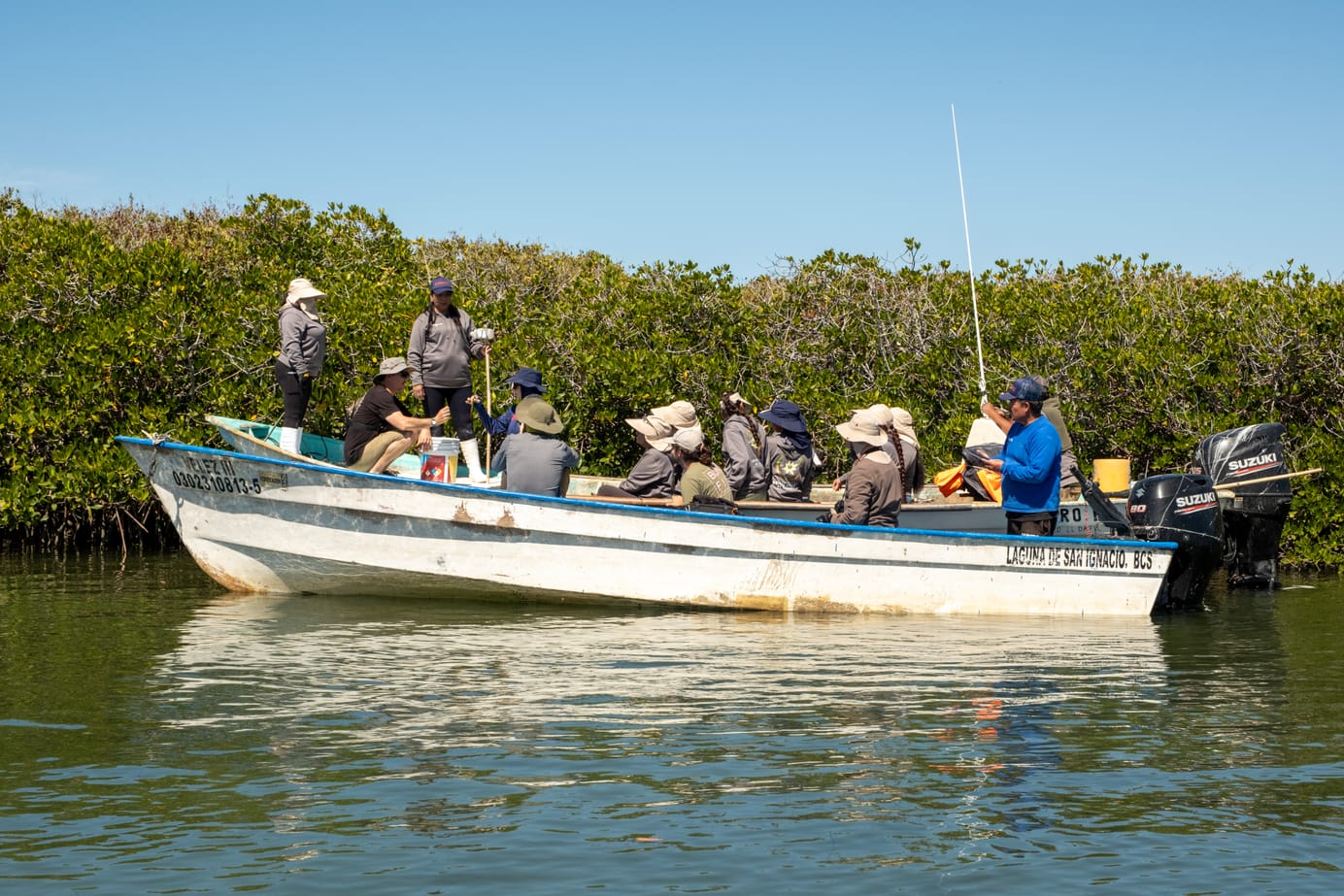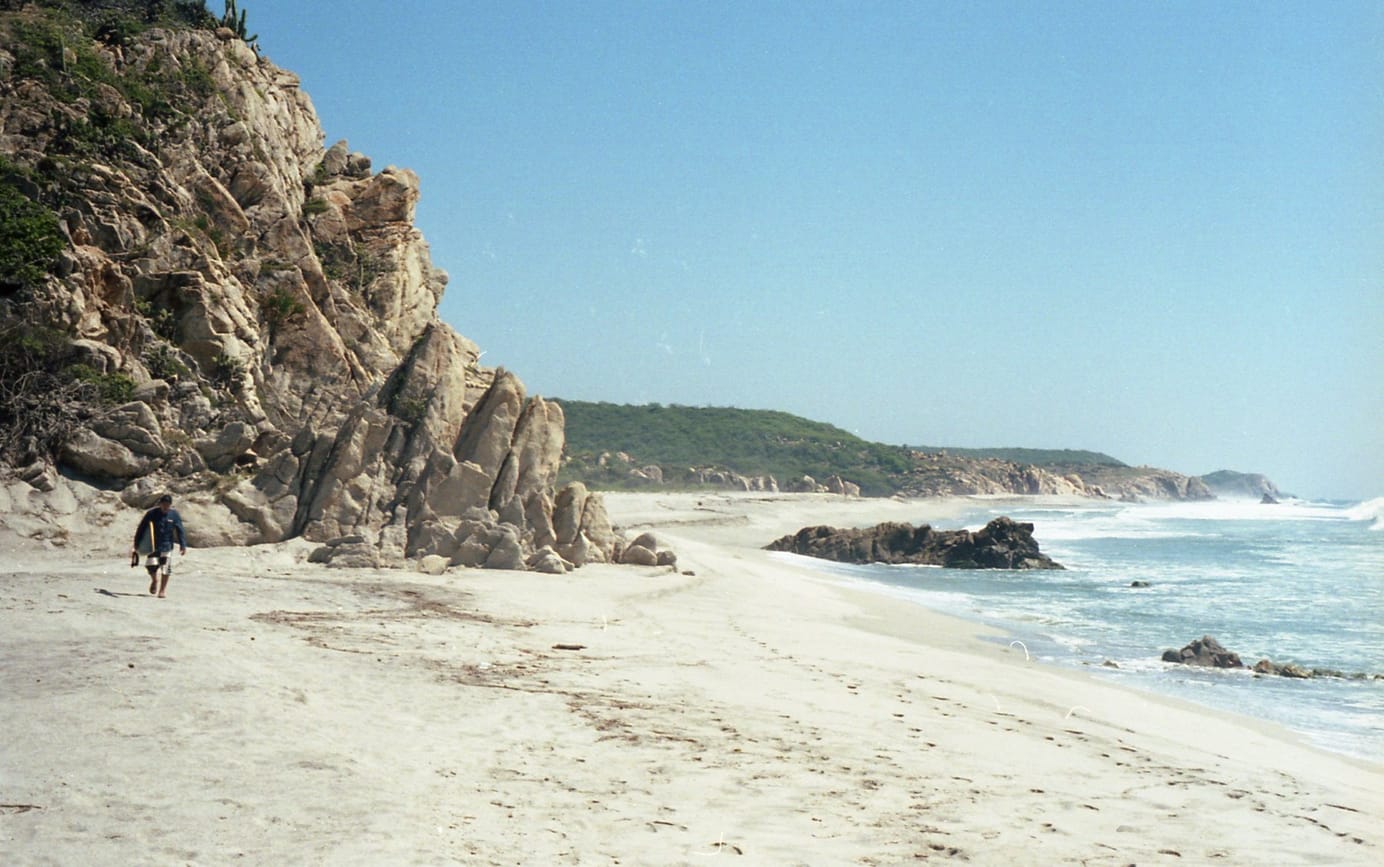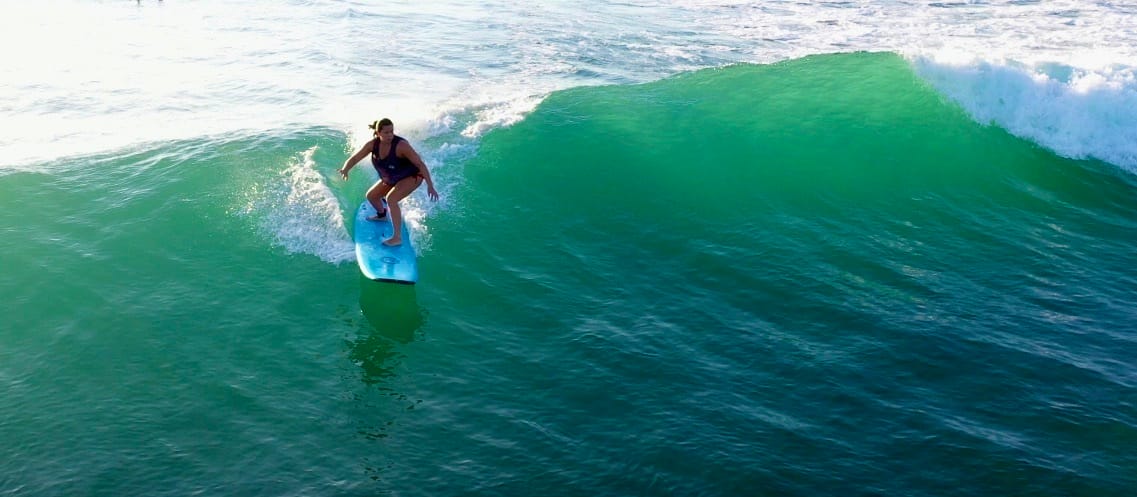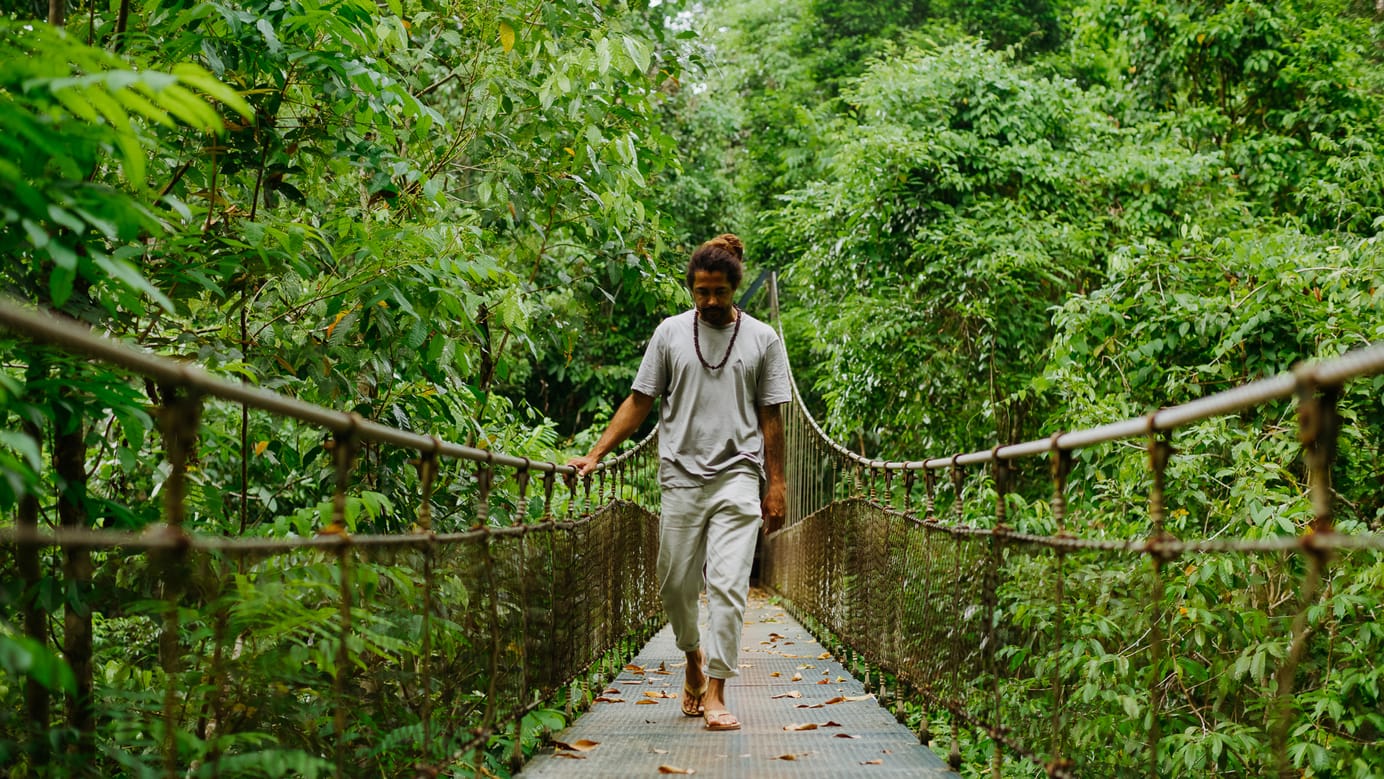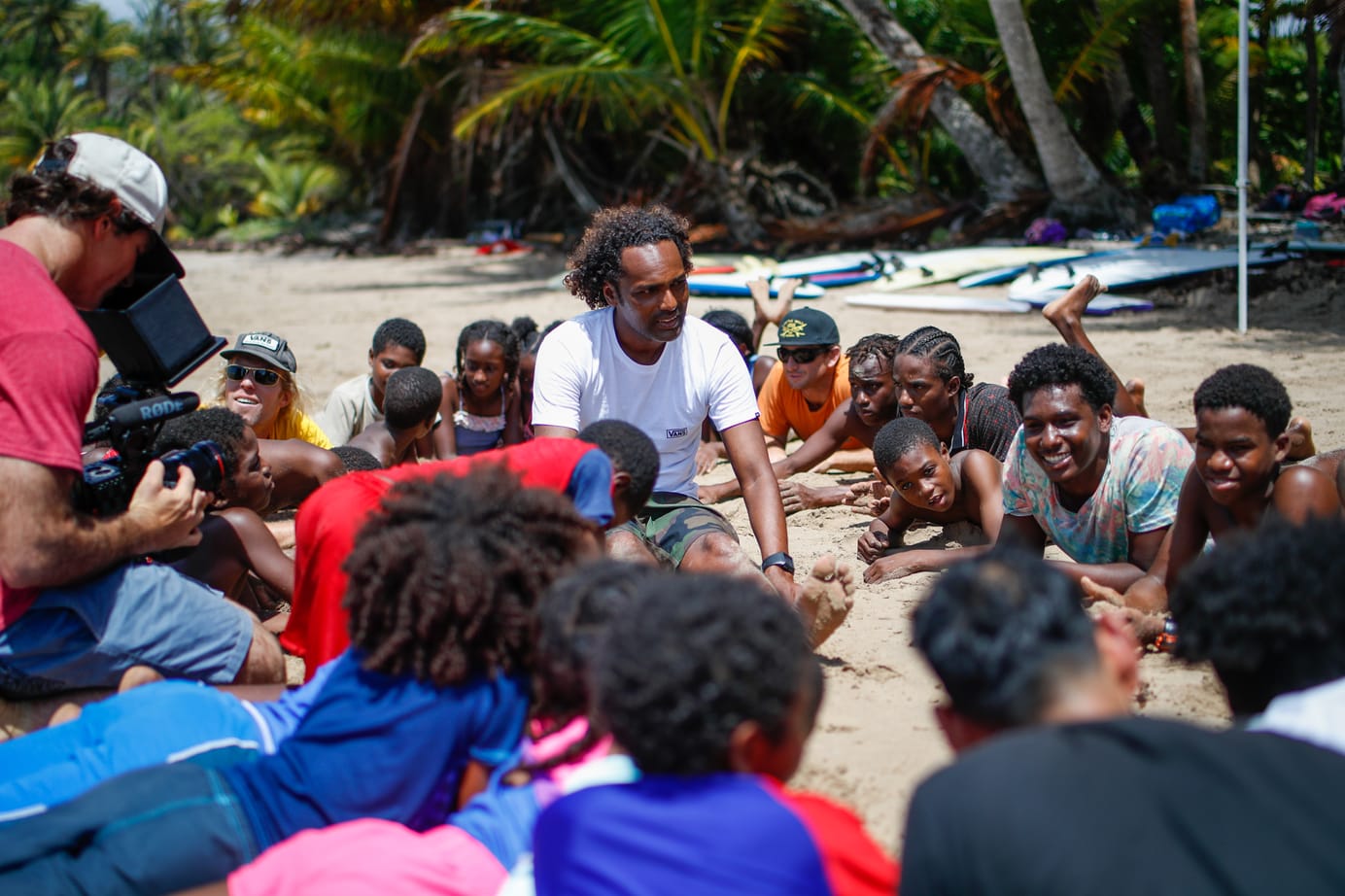
Waves of Inspiration
Let’s be real, whether it's in your everyday life or seen on your Instagram feed, there’s a lot of heaviness in the world. Even if you are far from danger, it can be hard to handle and you don’t need to be an expert to realize how it can be detrimental to people’s mental health. While on the one hand, there are so many things to be thankful for, the other hand is holding a grip of bad, bad news…and it seems like all too often the latter is getting all the attention.
In journalism, this practice is known as sensationalism and has been around long before algorithms started powering your social media feed. The idea is that sensational news–even if it is inaccurate–is more likely to catch the audience’s attention. That means we are more likely to see a headline that propagates and exaggerates doom and gloom, than one that heralds some groundbreaking discovery like that there are mushrooms that can eat plastic and clean up oil spills.
While it may not be sensational in the media’s eyes, there are countless individuals and organizations who dedicate their time and energy to pursuits that go beyond their pockets, they work for the benefit of others and future generations. That is why I am happy to introduce you all to The Aloha Award as well as some of the people and organizations on our radar who deserve attention and support. The nomination period is open until the end of March, may you feel so inspired as to nominate them for the award, you would be a part of compounding the effects of their labor and spreading Aloha.
About The Aloha Award
Founded in 2018 by Mark Hartmann, the purpose of the Aloha Award is to recognize, reward and support exceptional individuals in the global surf & ocean sports communities who, in addition to cultivating and sharing their joy of surfing or other ocean sports with others, are making meaningful contributions to the well-being of their communities. Now in its 7th year, the prior award winners are a rad list of good samaritans from around the world. Such as Ben Brondema, a former police officer from the Netherlands, who started Surfvivor to help veterans and first responders overcome PTSD. As well as our very own Chris Dennis, who offers youth & community development programs in Trinidad through his organization Waves for Hope.
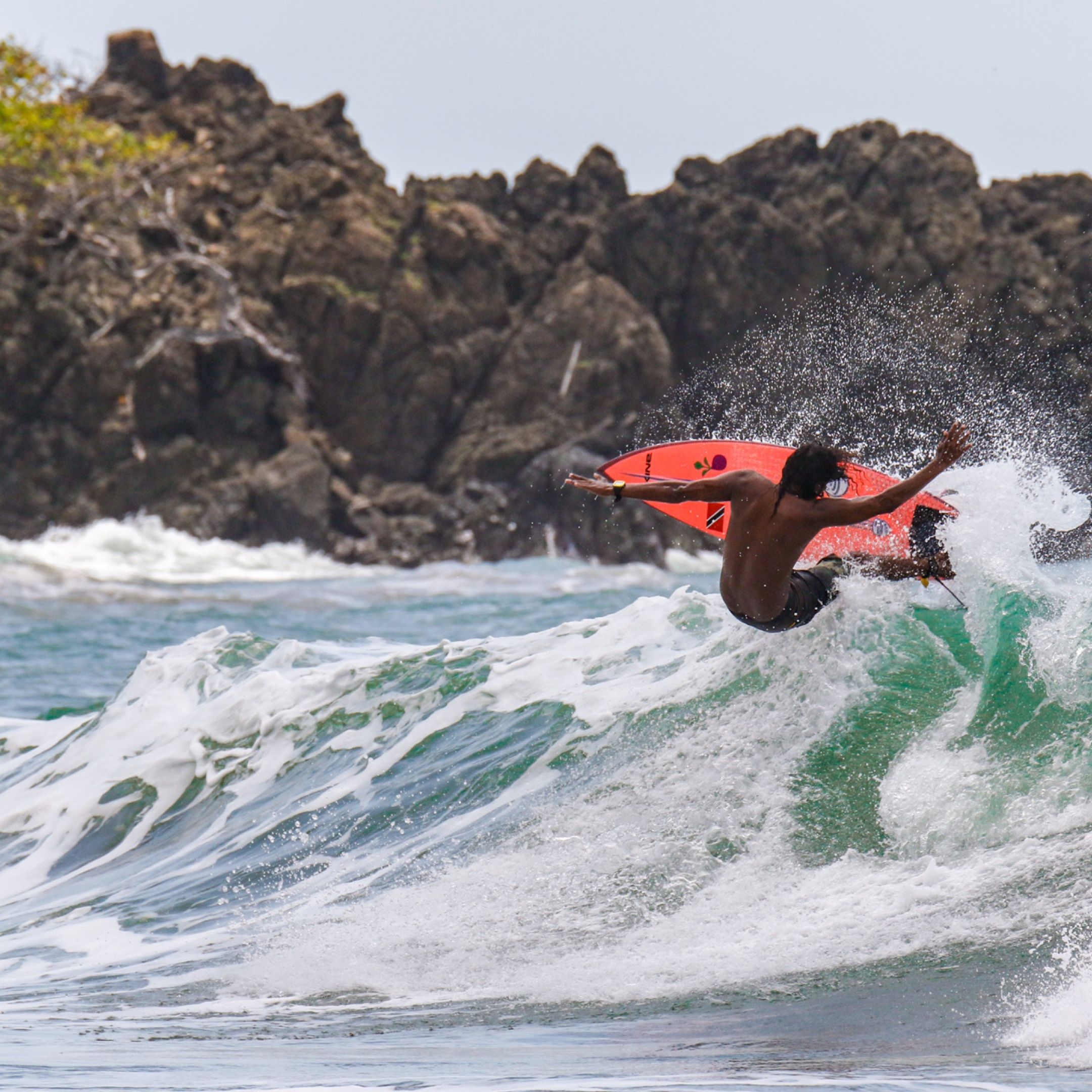
I had a chance to connect with Hartmann and learn more about what people should know about the award to help spread the word. He shared that while there are no fixed criteria, “The ideal nominee is somebody who would welcome you with a big smile into the line-up at their local surf break (or whatever the equivalent of that would be in the other ocean sports communities) AND who is working full time or part-time on an initiative that aimed at protecting the ocean or harnessing its healing power in the service of others.”
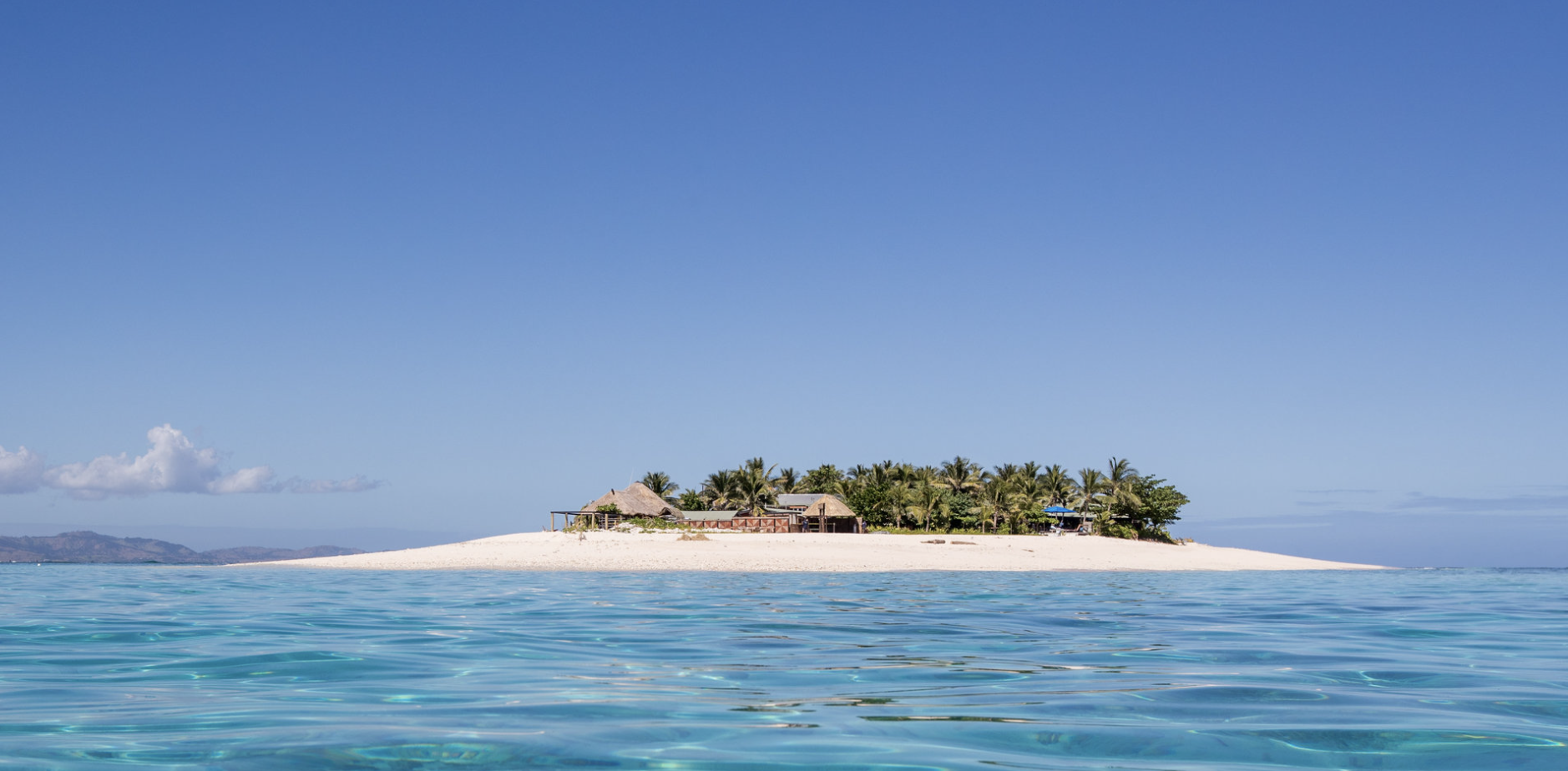
In addition to a week-long, all-expense paid trip to Namotu Island, winners receive a $10,000 donation to the organization of their choice, as well as a $2,500 grant to attend the International Surf Therapy Organization conference or education that can help them develop the capacity to scale their organization. The runner-up receives a $5,000 donation to their organization of choice as well as the $2,500 grant and the trip to Namotu. As for the trip, Hartmann said the idea is, “to provide the winner and runner-up with the opportunity to recharge and reenergize during a week-long trip to one of the most magical water sports destinations on earth, Namotu Island in Fiji.”
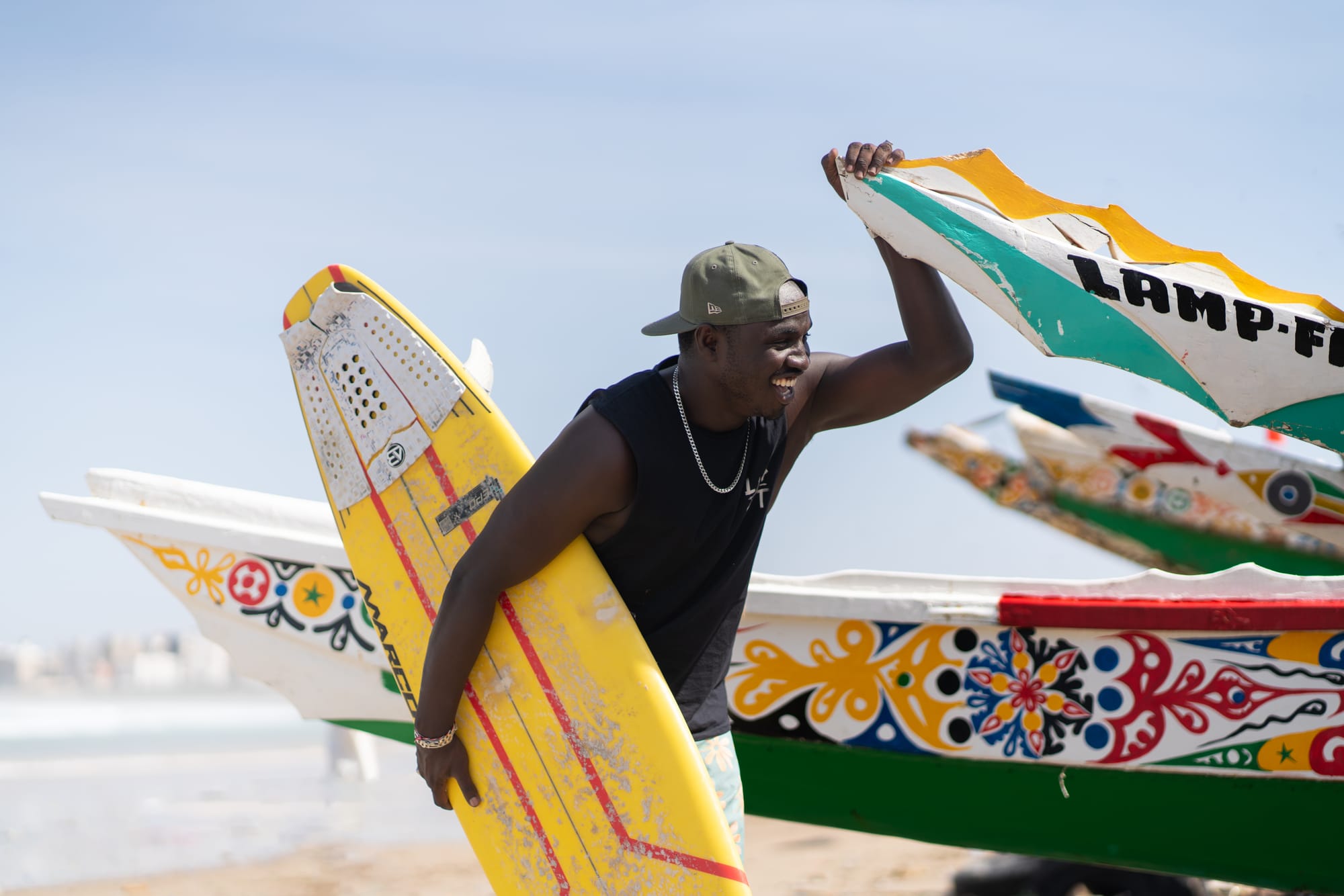
The Aloha Spirit of Thermal Guides
This inclusive and service-driven philosophy is exactly what we look for and what we love about getting to work with our guides around the world. Whether it is Alan Burke in Barbados, or Allan Landgren in the Dominican Republic, who both volunteer and create opportunities for local kids to surf.
Just like Maryam Gardoum in Morocco, and Suri Barrera in El Salvador, who both inspire the young women in their countries to take up surfing as a means to create safe opportunity. Suri is the leader of Hijas del Mar (Daughters of the Sea), a non-profit to empower and unify local girls through surfing and community.
In Senegal, we have Babacar Thiaw, Founder of Surfrider Senegal, who started by organizing small beach cleanups and is now working, “with the Portuguese Embassy to demonstrate to people what it would require to have a clean zero-waste beach.”
Then there is Scott Balogh, in Panama, who mentors and employs youth from the local indigenous community and teaches them skills that they can utilize throughout their lives as well as helping them build homes for their families on their native territory. Scott also instigated the campaign and rallied the local community, which saved one of the best waves in Bocas from a shady development project.
In Costa Rica, Mayköl Espinoza and Tavo Rio, introduce countless people the joys of the ocean and show them how connecting with their country's natural wonders leads to a more fulfilled and joyous life.
In Nicaragua, Matteo Blevins coaches and mentors the local youth giving them opportunities as athletes, instructors, and media professionals.
In Ecuador, Eddie Salazar works tirelessly to preserve the pristine ecosystem of the Galapagos Islands by restoring habitats with endemic plants.
In Oaxaca, Pablo Narvaez has been an environmental activist for over 30 years and has worked with numerous organizations, including WILDCOAST and GoPro, to help protect sea turtles and preserve the unique coastal ecosystems found near his home in Barra de La Cruz.
I could go on and on about our guides, each with an incredible life story filled with passion for the ocean and their local communities.
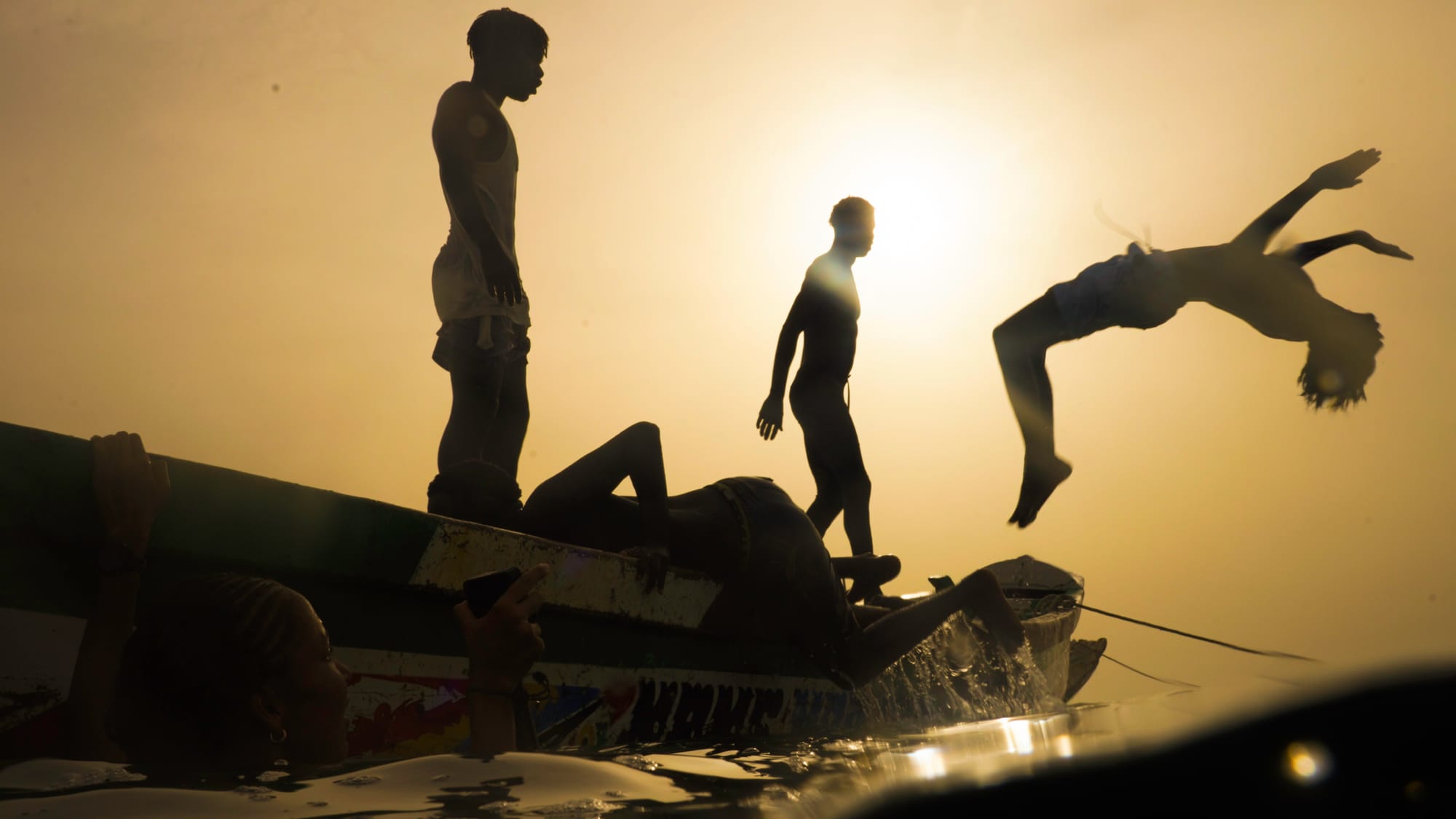
The Surf Therapy Connection
All around the world, countless individuals dedicate their time and energy to help others find healing in the ocean, a practice called surf therapy. It can take many shapes and forms, from helping individuals with physical conditions like amputees or limb deficiencies to those with mental health issues like PTSD or depression. Participants don’t need to surf or ride a wave to find peace from simply being on the beach or near the water.
To date, the majority of Aloha Award nominees have come from the surf therapy arena. Hartmann explained; “This is partly because our joint venture partner and fiscal sponsor for the Aloha Award is the International Surf Therapy Organization (ISTO)."
"While we are massive advocates of the power of surf therapy, we are also passionate about ocean conservation and would love to get the word out to grassroots ocean conservation groups about the Aloha Award. As our former finalist, current judge, and Executive Director of ISTO, Kris Primacio, always reminds me, there is no surf therapy without the ocean, we need to do our best to protect it.”
A close friend of ours, Sean Brody, is a great example of someone who helps people from a wide array of backgrounds get in touch with the healing power of the ocean. In addition to offering adaptive surf lessons year-round with his school, Surf Education Academy, Sean is also the head coach of the USA Para Surfing Team and further creates impact through his work with groups like the Challenge Athletes Foundation (CAF) and their volunteer surf clinics.
Additional resources for those looking to participate or volunteer with surf therapy include the High Fives Foundation, SoFly Surf School, Life Rolls On, Surfers Healing, Operation Surf, SURF4DEM, MeWater Foundation, and Black Surfer’s Collective. You can also check a comprehensive list of organizations across the world via the ISTO website.
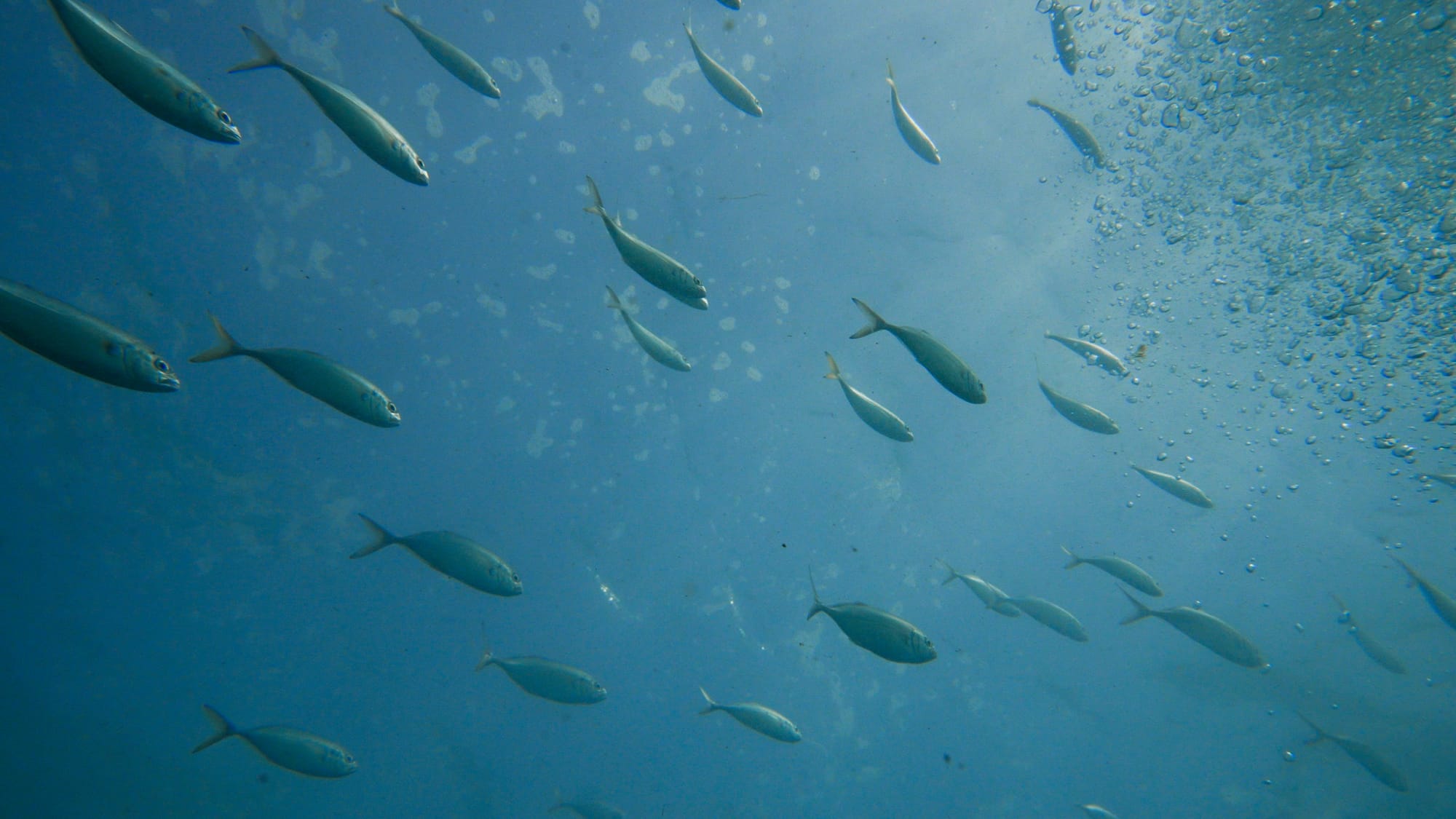
Ocean Conservation
The ocean covers more than 70% of our planet and human-related activities threaten large swaths of our beloved deep blue seas. The list of tragedies is long–from plastic pollution dirtying our beaches and choking marine life, to coral bleaching from rising sea temperatures, sea-level rise that threatens coastal communities, and oil spills that wreak havoc on everything they touch. The list of organizations combating these issues is also long, here are some that have long been on our radar and are worthy of your attention and support.
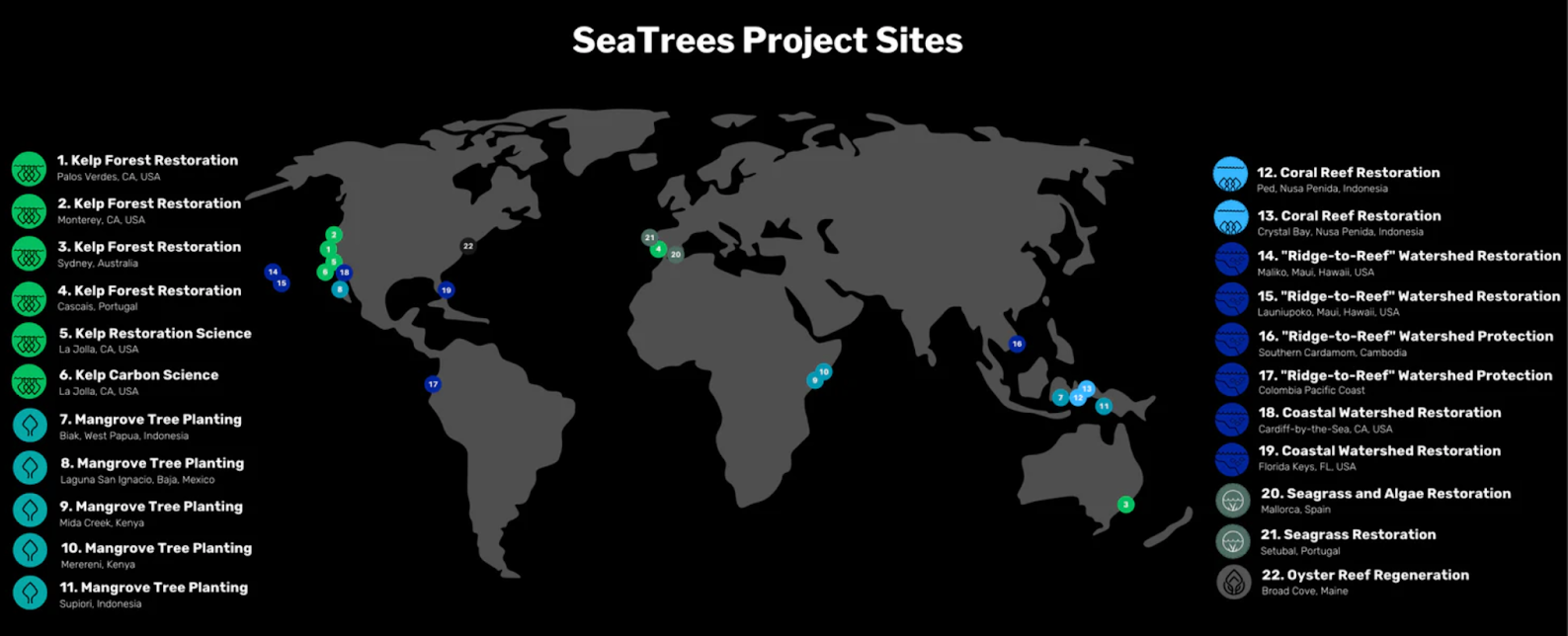
SeaTrees + Sustainable Surf
SeaTrees is a program of the 501c3 non-profit Sustainable Surf that develops coastal restoration projects around the world to reverse climate change. They plant, protect, and restore coastal ecosystems, including kelp and mangrove forests, seagrass meadows, coral reefs, oyster reefs, and coastal watersheds. Essentially, they do amazing work, and “they” are a pretty incredible crew of ocean lovers.
Co-founder, Michael Stewart, is one of those rare people who approach seemingly impossible problems with optimism and a can-do attitude. Their Program Manager, Leah Hays, is like a lighthouse of hope in a turbulent storm–and she is just one of the several wonderful women of Sustainable Surf. SeaTrees initiates community-led restoration projects that combine modern science, indigenous wisdom, and innovative business practices to create a lasting impact and heal the planet in real-time while creating jobs to maintain these projects over time.
All of us here at Thermal are thrilled to be partnering with SeaTrees to offset our Residency Program, and all of our Adventures, by donating to the mangrove restoration project in Laguna San Ignacio, in Baja del Sur, Mexico. This project is done in collaboration with WILDCOAST.
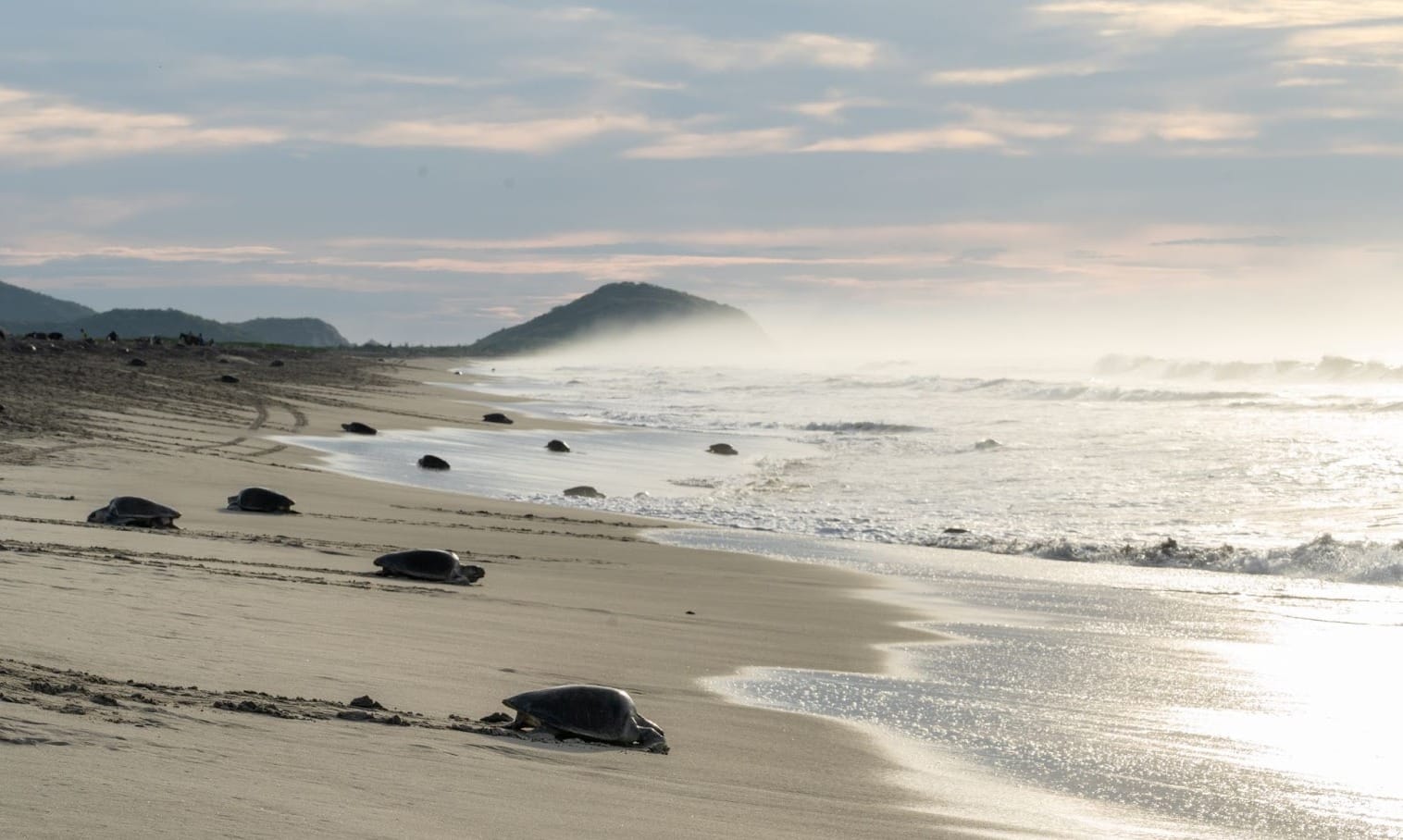
WILDCOAST
WILDCOAST is an international team working to conserve more than 38 million acres of pristine coastlines throughout the US and Mexico. This includes 545,280 acres of Marine Protected Areas (MPA) in California. In San Diego county alone there are 11 MPAs, some of which are also home to waves like Swami’s and Black’s. In Mexico, their projects involve mangrove forests, gray whale lagoons, stunning coral reefs, and open ocean ecosystems like Cabo Pulmo, and sea turtle nesting sites in Oaxaca.
As part of a new partnership with WILDCOAST, Thermal will offer travelers the opportunity to contribute, and get to know these programs intimately, through our adventures in Cabo and Oaxaca. Our shared vision is to further develop surf travel experiences that create positive impacts for both travelers and local communities.
Released last year, as part of a celebration for International Women’s Day, the film Aloha El Datil documents the experience of Hawaiian-born pro surfer Maluhia Kinimaka as she travels to Baja to get to know “El Mujeres de Datil”, who are the women behind the mangrove restoration at Laguna San Ignacio, a UNESCO World Heritage Site, and home to the last undeveloped gray whale lagoon. The film itself is a journey across three languages–Hawaiian, English, and Spanish–that drives home the message that we are not divided by land, but connected by water.
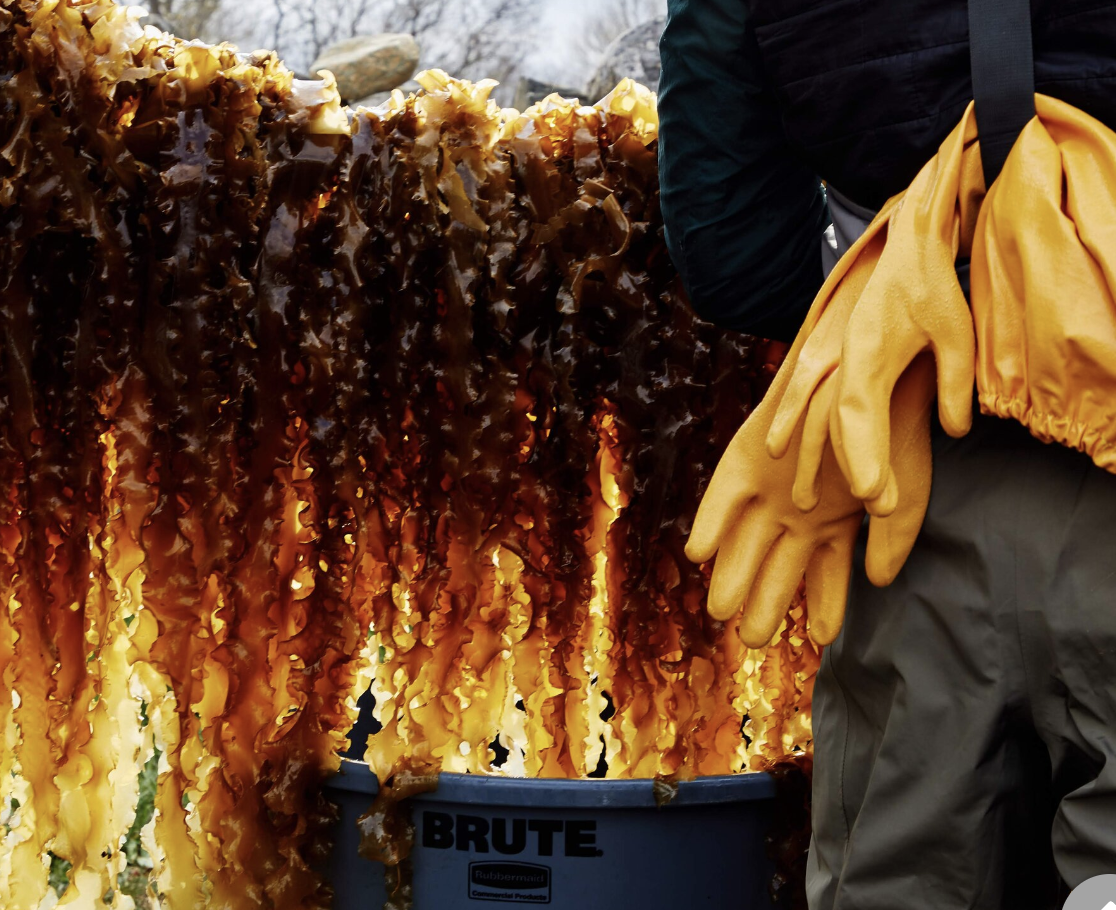
GreenWave
Co-founder Bren Smith, a former commercial fisherman turned aquaculture professional, pioneered the development of restorative 3D ocean farming and is sharing the knowledge via his non-profit. GreenWave offers online education for anyone interested in getting involved in restorative ocean farming and has a 10-year goal of providing training, tools, and support to a baseline of 10,000 farmers to catalyze the planting of regenerative ocean crops and yield meaningful economic and climate impacts.
Although Smith was named one of the 25 People Shaping the Future of The World by Rolling Stone in 2017, he’s not your classic environmentalist, far from it. His approach is centered around human intervention for human benefit–he wants to create jobs and increase our food security. He believes that seeing the ocean as a victim of climate change is the wrong perspective, rather, we need to see it as our ally in the fight against climate change.
In 2019, his semi-autobiographical book, Eat Like A Fish, won the James Beard Foundation book award, and is one of my all-time favorites. It is, at times, downright hilarious as he recounts stories from his life on the high seas and, at others, absolutely inspiring as he shares statistics that could woo even the most staunchly suspicious climate deniers and turn them into kelp enthusiasts. For example, feeding cattle 1% diet of seaweed would reduce their methane emissions by over 58% or that seaweed farming just 5% percent of US waters would create 50 million jobs!
“Every shiver of pain has been worth it. It’s a meaningful life. I’m proud to spend my days helping feed my community, and if all goes well, I will die on my boat one day. Maybe get a small obit in the town paper, letting friends know that I was taken by the ocean, that I died a proud farmer growing food underwater. That I wasn’t a tree hugger but spent my days listening to and learning from waves and weather. That I believed in building a world where we can all make a living on a living planet.” - Bren Smith, GreenWave.
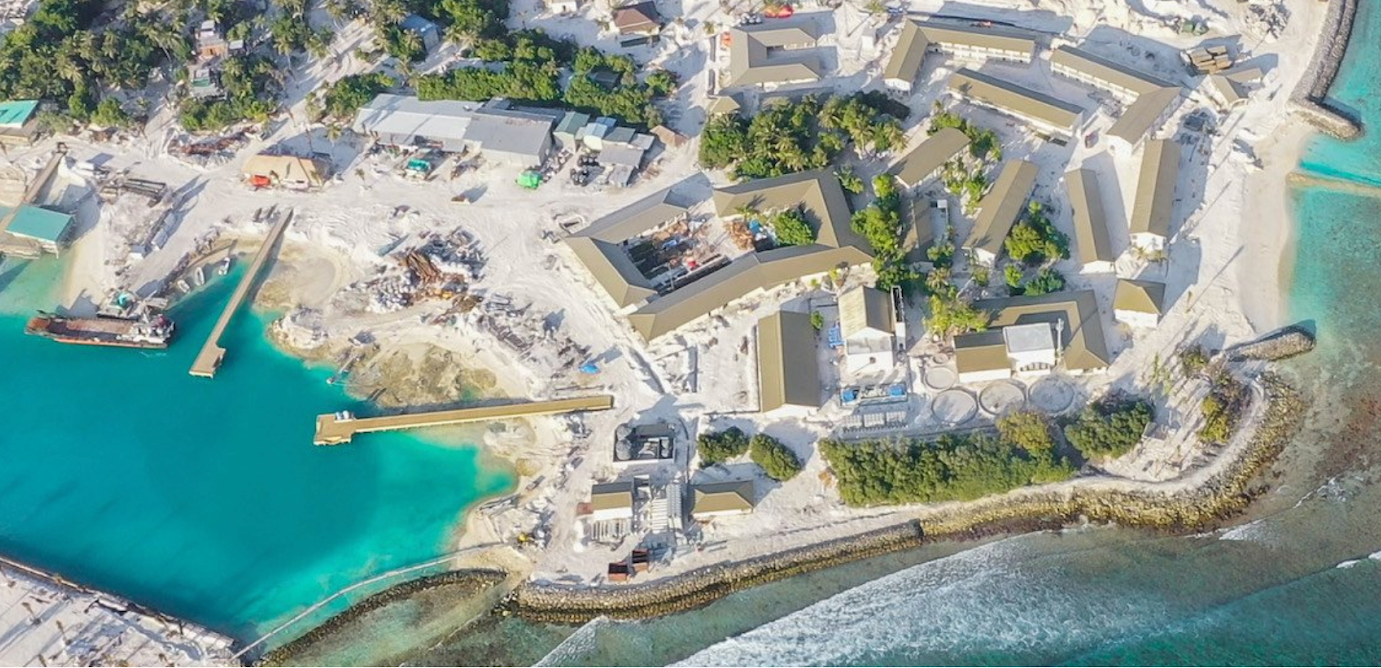
Save The Waves
Perhaps best known for their World Surfing Reserves (WSR) program, which has saved iconic waves like Punta de Lobos, Save The Waves is a coalition of activists working together to protect surf ecosystems. Their other program, the Surf Protected Area Network (SPAN) is a new approach to marine and coastal conservation that combines the legal protection of ecosystems with sustainable community development.
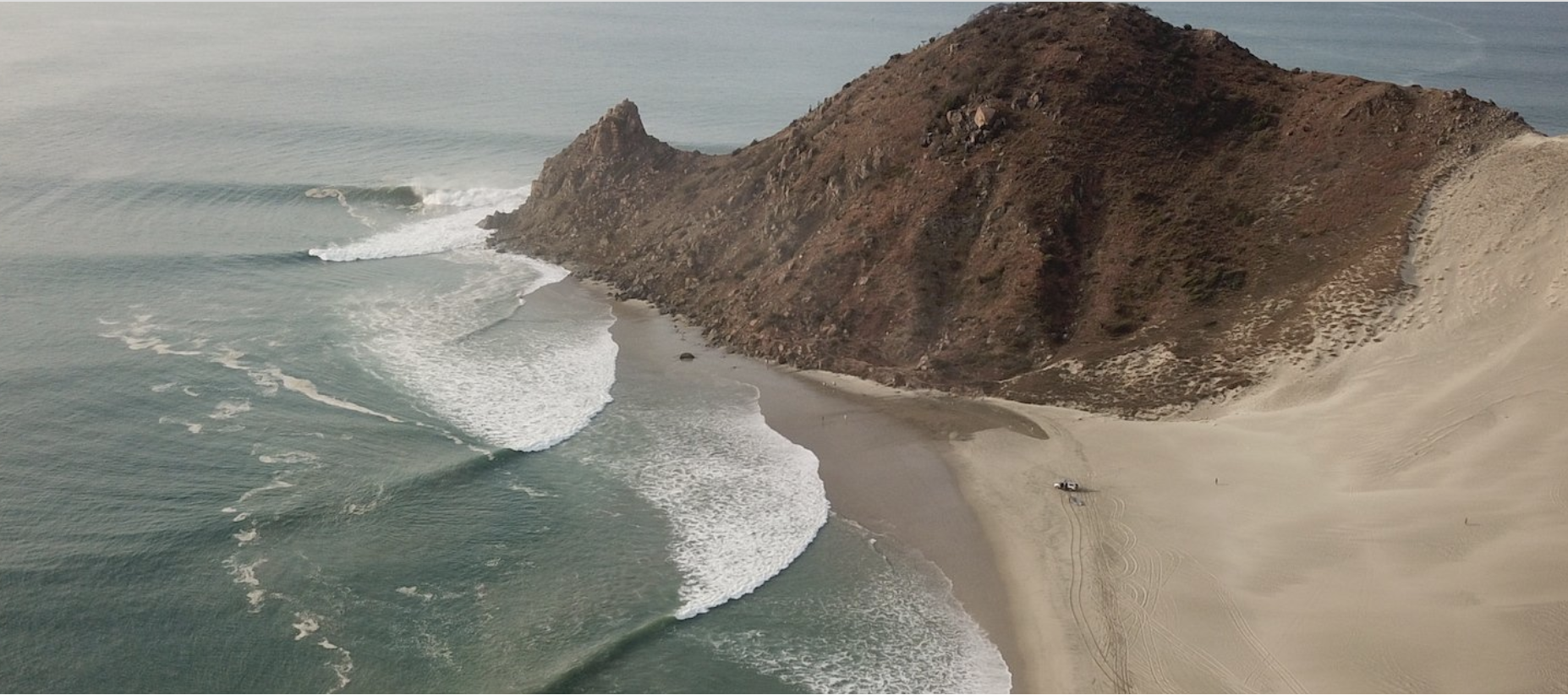
In Mexico, they have an ongoing campaign to save the wave at Punta Conejo, Oaxaca. The proposed Punta Conejo Protected Area will preserve over 3,500 acres of land, 6.5 miles of coastline including 3 surf breaks (Punta Conejo, Punta Chivo, and Punta Escondida), and 1,277 acres of mangrove forest. Preserving this area would also conserve habitat for over 40 species of birds and 4 species of sea turtles, several of which are endangered. They have been working with local partners – Reservas de Surf Mexico, A.C., WILDCOAST, and Union de Surfistas y Salvavidas de Salina Cruz, A.C. – to conserve the surf ecosystems and the local economies that depend on it. You can learn more via this short film.
There is another ongoing campaign in the Maldives, where they are supporting local surfers and grassroots organizations to protect waves under immediate threat from development and infrastructure projects as well as the long-term impacts from climate change. Both campaigns are nearly reaching their next goal and I highly encourage you to take a moment to sign both petitions, to help protect the waves of the Maldives and Oaxaca!
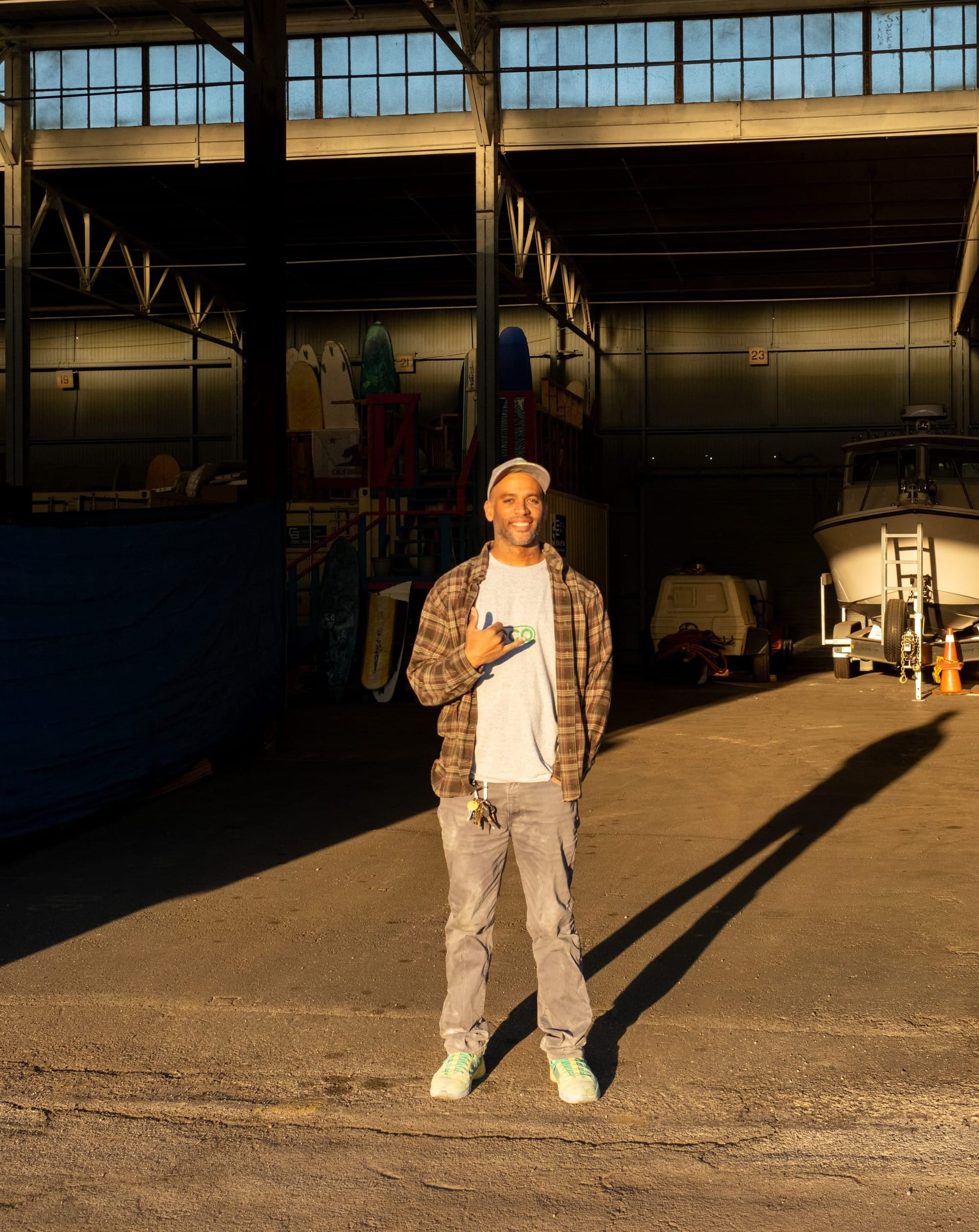
Eco by Ry
Ryan Harris, a.k.a. “Ry”, is like a mad scientist (in the best possible way) who is trapped in a surfer’s body. Ry is a surfboard shaper out of the South Bay of Los Angeles and he had been on my radar for some time and I finally got to meet him thanks to an introduction via Sustainable Surf. Ry is a certified Eco Board builder committed to eliminating waste from surfboard manufacturing–a process filled with many “dirty little secrets”.
He doesn’t just stop there though, Ry is cleaning up trash from LA beaches and lineups every time he hits the coast and he upcycles whatever he can into usable products like wax combs, shot glasses, planters, and tableware. During my visit, I asked him, “Did you major in chemistry?”
“Hell no dude! I’m not that smart! I come from a design background…”
Well, he could have certainly fooled me because he was totally tapped on how to rework different materials–from resin to plastic, to EPS foam and old soft-tops–to prevent them from going into landfills, or worse, the ocean.
Ry’s work has landed him a spot in the Altasea project, which is essentially an incubator for sustainable ocean-based enterprises that sit at the intersection of education, science, and business. For the past year, his shaping studio and headquarters have been based out of Altasea West Campus at the Port of Los Angeles, Berth 57, to be exact. Getting down there felt like a trip in and of itself as I drove by all the big ships, fishing, and naval infrastructure dating back to the 1920s.
Altasea is repurposing obsolete port cargo facilities and infrastructure to create space for tenants that qualify for the program, Berth 57 is specifically designated to be the ocean science research and development facility for partner universities and blue technology businesses. It’s a 45,000-square-foot warehouse that Ry shares with a few other operations and will be the home of his Educational Center of Sustainability in Surf (ECOSS) where he will offer workshops in Eco Board building and upcycling.
Ry’s energy and enthusiasm is quite contagious, like Michael Stewart, he’s one of those people who stokes you out when you spend time with him. Honestly, as I stood there in the giant warehouse learning about what he was up to, I felt like I was with Bruce Wayne when he first realized the potential of the Bat Cave.
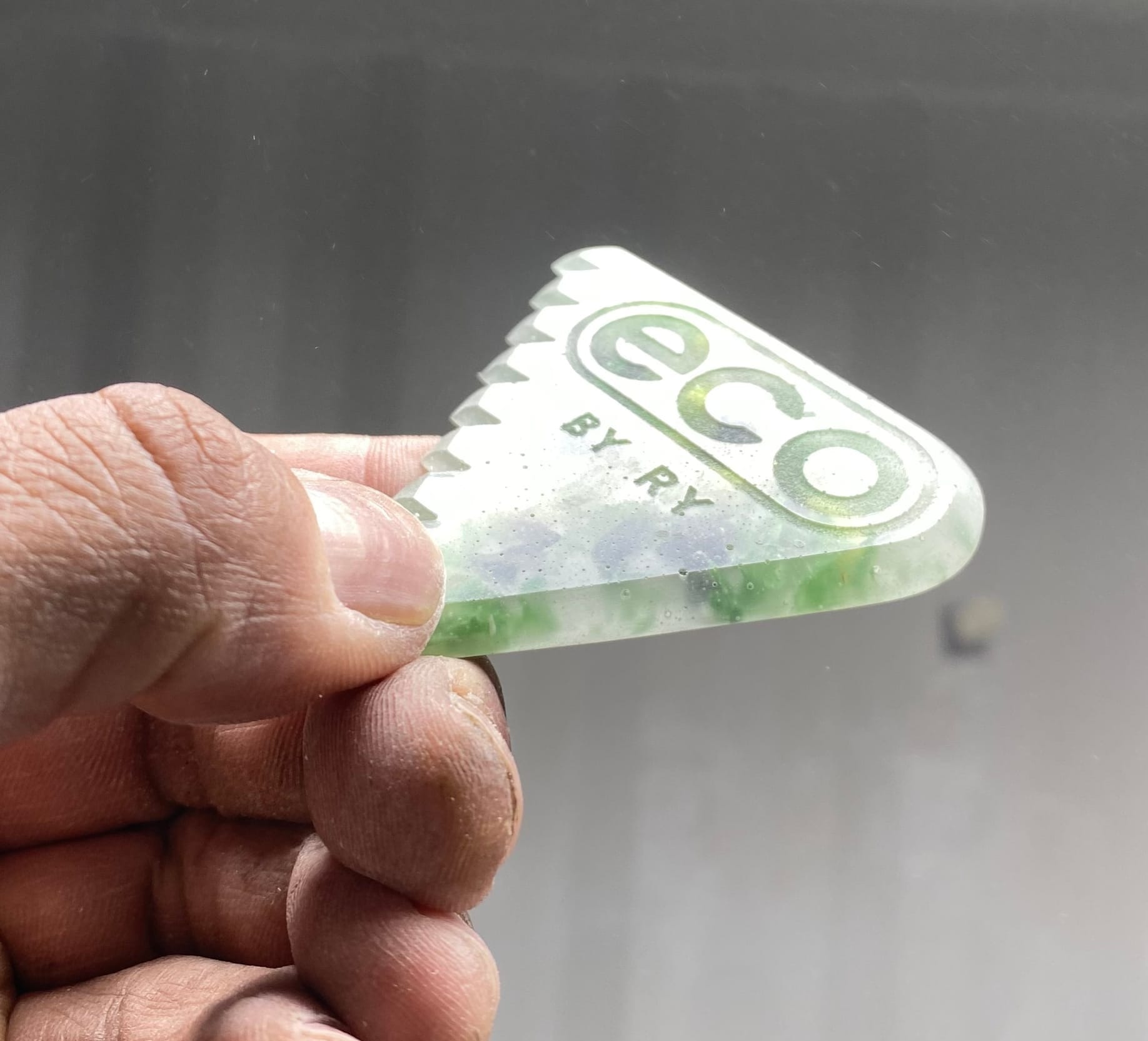
To support the ECOSS check out his crowdfunding campaign and get yourself some upcycled goods, I personally love the wax combs, shot glasses, and re-bowls!
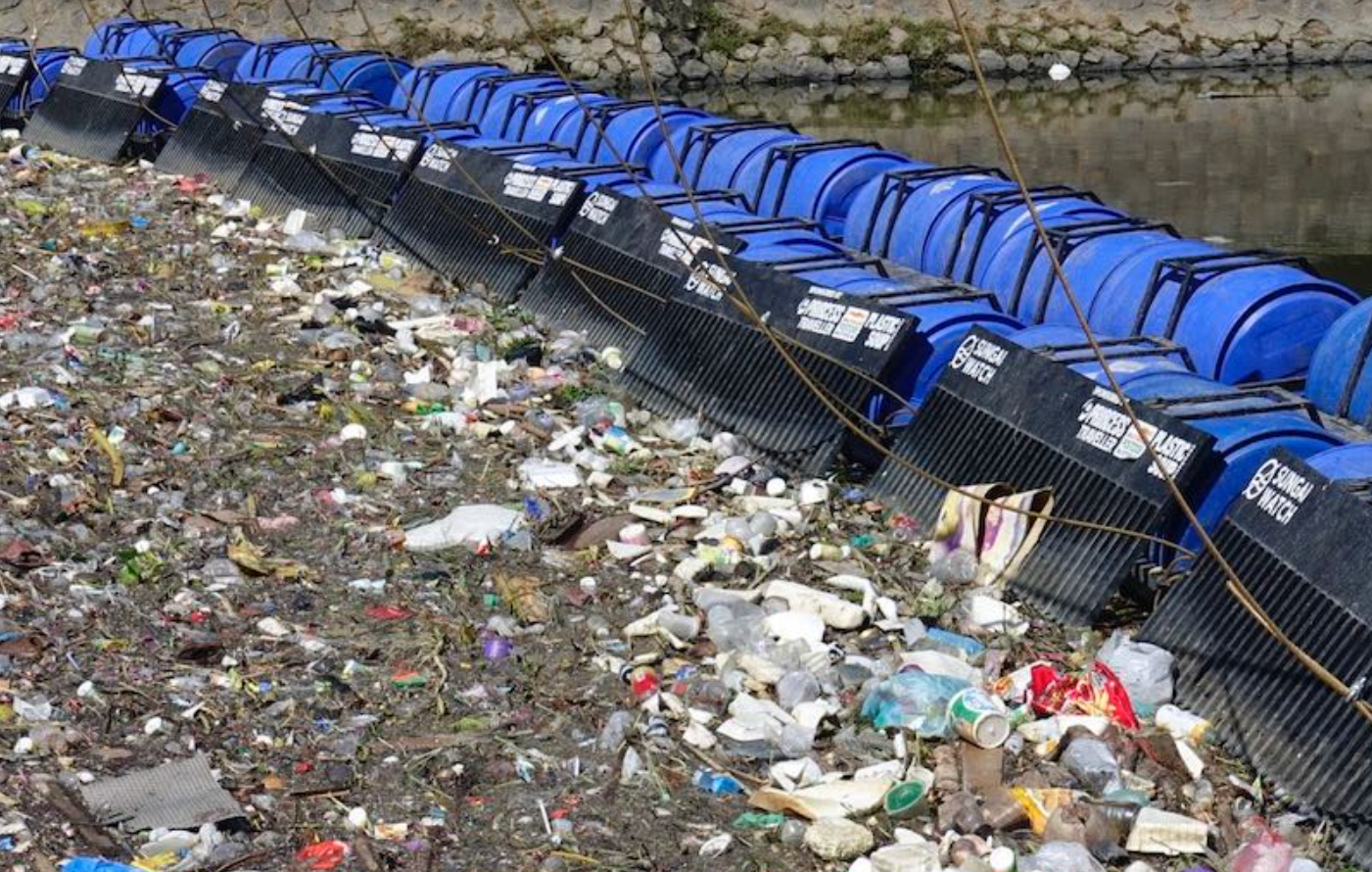
Sungai Watch + Sungai Design
Sungai Watch is an incredible organization based in Bali with the mission of cleaning up and protecting rivers, starting in Indonesia, to preserve their ecosystems and prevent plastic pollution from entering the ocean. Anyone who has been to Bali, or any island, can easily see how trash can become a giant problem. Every day, ships and planes arrive, bringing more people and plastic to a small landmass surrounded by ocean. While tourists leave frequently, their trash stays behind forever.
In just three years Sungai Watch has organized over 1,000 cleanups, impacting more than 260 villages, and installed 250 trash barriers, collecting nearly 2,000,000 kgs of trash–that’s almost 4.5 million pounds! Again, being on an island presents challenges when disposing of trash, hence, the birth of Sungai Design.
Like Ry, Sungai Design is upcycling plastic waste–going as far as washing out discarded plastic bags–by making pellets that can then be transformed into usable goods. Their inaugural product line of lounge chairs are so sexy they could go well in a boutique 5-star hotel and no one would realize they were made of trash.
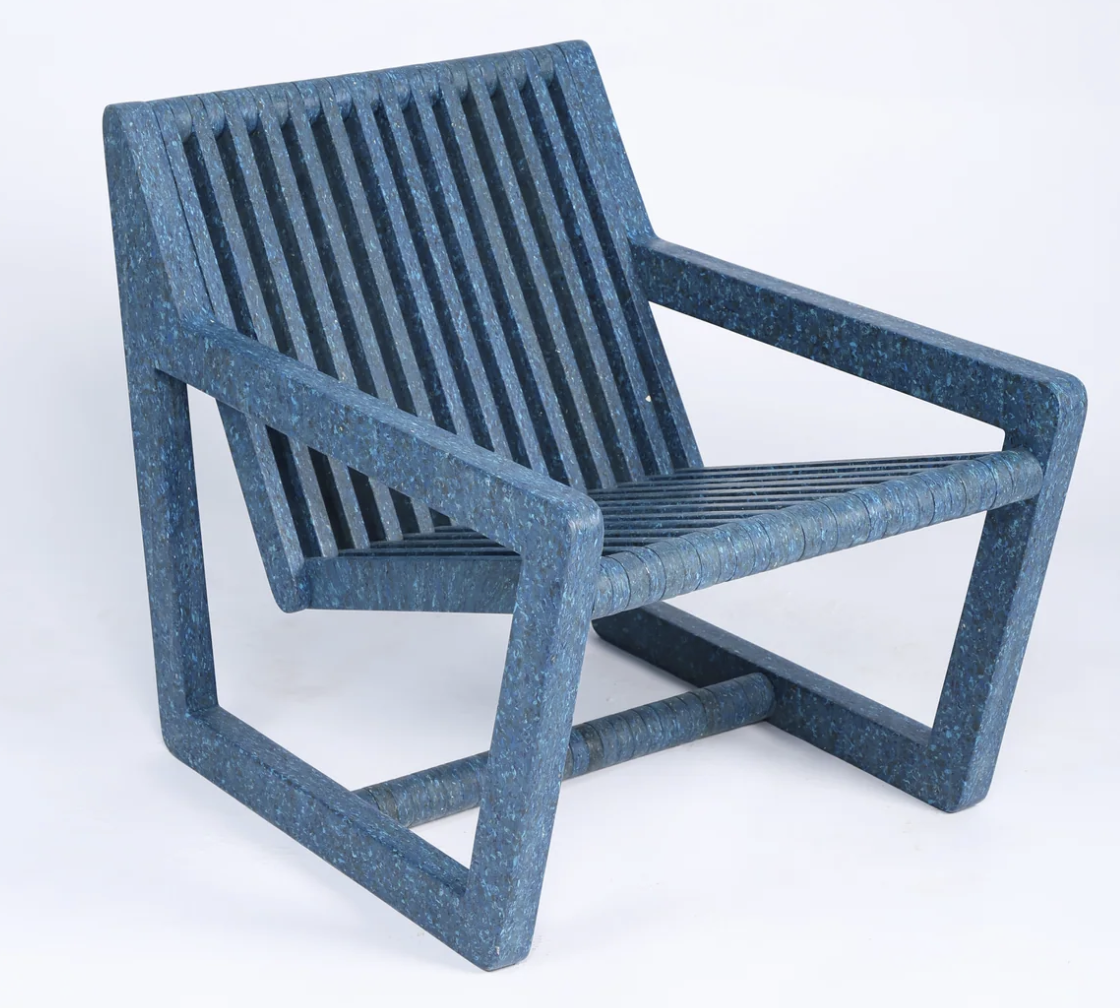
While Indonesia is arguably the most wave-rich country in the world, it is also the 2nd largest plastic polluter to the oceans after China. When Sungai Watch conducts their emergency cleanups they bring a whole local squad and they go to work for hours, check out this timeline post from their IG.
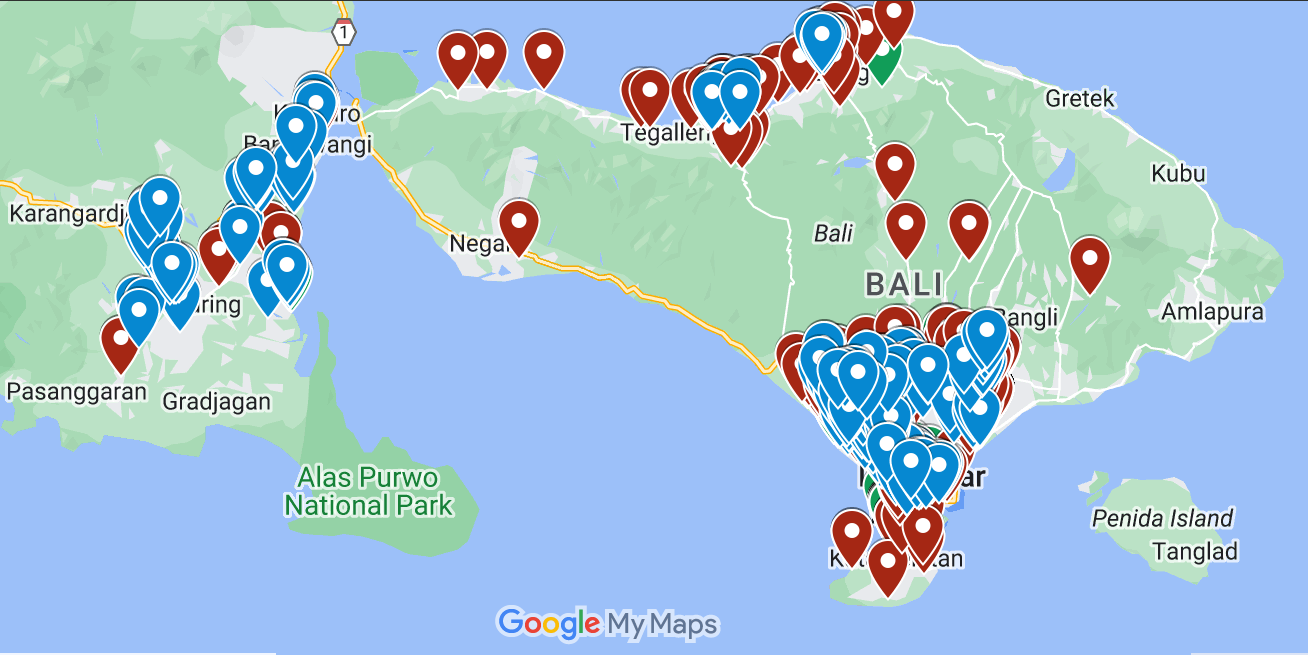
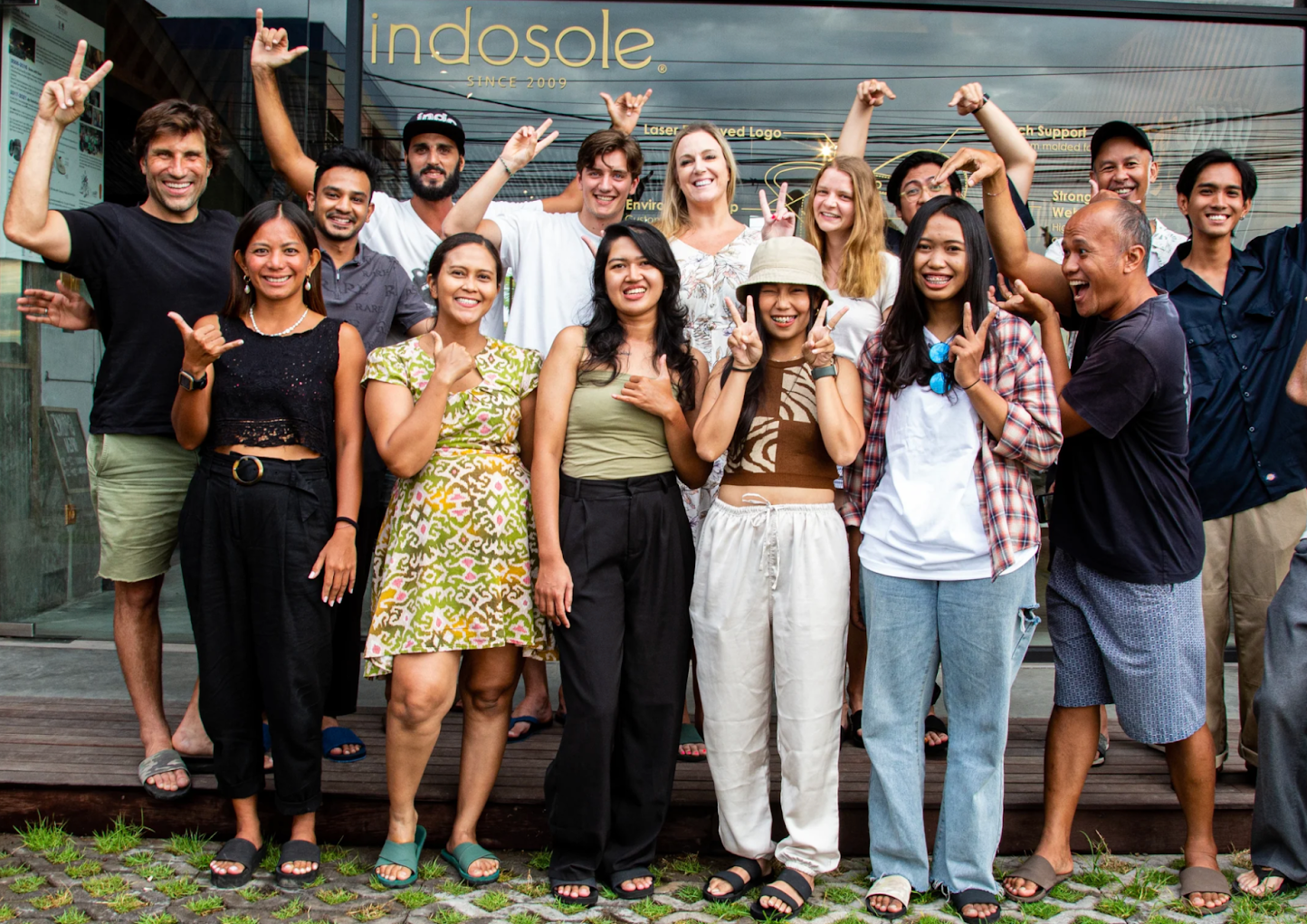
IndoSole
Another one of our favorite Bali-based operations is IndoSole, which recently partnered with Sungai Watch to incorporate river waste into their new sandal line, appropriately called RiverSole. Their original line was launched over 14 years ago focusing on upcycling old tires into stylish sandals.
What started as an analog and handmade process, which saved over 80k tires from landfills, has now been scaled to try and keep up with the exponential rate of worldwide industrial waste. You can watch the full story and be sure to keep them in mind the next time you are thinking about getting a new pair of sandals.
*If you know of any individuals or organizations that belong on this list, feel free to drop me a line chris@thermal.travel


